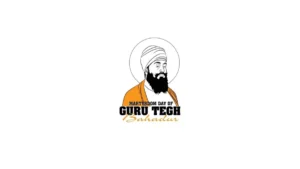In a momentous announcement, Gujarat Chief Minister Bhupendra Patel declared that the vibrant and culturally significant Garba dance has been officially recognized by UNESCO, earning a coveted spot on the “Representative List of the Intangible Cultural Heritage of Humanity.” The announcement was met with enthusiasm from Prime Minister Narendra Modi, who commended the global acknowledgment of this traditional Indian dance form.
Celebrating Gujarat’s Identity: Garba’s UNESCO Recognition
The Garba dance, deeply rooted in the cultural fabric of Gujarat, has long been a symbol of devotion to Goddess Mother during the auspicious Navratri festival. Chief Minister Patel expressed pride in the approval, emphasizing that Garba has not only retained its age-old traditions but continues to evolve and thrive.
UNESCO Recognition Process
The recent inclusion of Garba dance in UNESCO’s list occurred during the 18th meeting of the Intergovernmental Committee for the Safeguarding of the Intangible Cultural Heritage. This recognition was made under the 2003 Convention for the Safeguarding of Intangible Cultural Heritage. The dance joins a select group of elements from India on the esteemed list, underlining its cultural importance.
Exploring Garba Dance: A Ritualistic and Devotional Art Form
Garba is described by UNESCO as a “ritualistic and devotional dance” performed during the festival of Navratri, dedicated to the worship of feminine energy or ‘Shakti.’ The dance unfolds around a perforated earthenware pot illuminated with an oil lamp or an image of the mother goddess Amba. Dancers, adorned in colorful attire, move in a counter-clockwise circle, engaging in simple yet energetic steps, including hopping and clapping hands in unison.
A Rich Cultural Tapestry: Garba Joins Illustrious Company
With this inclusion, Garba joins a distinguished list of Indian cultural phenomena on the UNESCO Intangible Cultural Heritage list. Notable mentions include Ramlila, Vedic Chants, Kumbh Mela, and Durga Puja, collectively enriching the world’s appreciation of India’s diverse and vibrant cultural heritage.
Important Questions Related to Exams
Q. How was the UNESCO recognition of Garba achieved, and during which committee meeting did it happen?
A: The recognition of Garba occurred during the 18th meeting of the Intergovernmental Committee for the Safeguarding of the Intangible Cultural Heritage under the 2003 Convention for the Safeguarding of Intangible Cultural Heritage.
Q. During which festival is the Garba dance traditionally performed, and what does it symbolize?
A: Garba is traditionally performed during the auspicious Navratri festival, symbolizing devotion to Goddess Mother and celebrating feminine energy or ‘Shakti.’
Q: Besides Garba, name three other Indian cultural phenomena mentioned in the text that are also on the UNESCO Intangible Cultural Heritage list.
A: Ramlila, Vedic Chants, Kumbh Mela, and Durga Puja are mentioned as other notable Indian cultural phenomena on the UNESCO Intangible Cultural Heritage list.




 Haryana Assembly Passes Resolution to Co...
Haryana Assembly Passes Resolution to Co...
 Jammu & Kashmir Gets Its First Gen Z...
Jammu & Kashmir Gets Its First Gen Z...
 PM Modi To Inaugurates New Terminal at G...
PM Modi To Inaugurates New Terminal at G...







